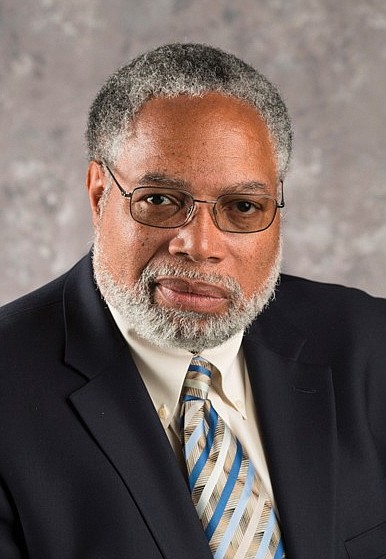Lonnie G. Bunch III named to head entire Smithsonian Institution
Free Press wire, staff report | 5/31/2019, 6 a.m.
WASHINGTON
When Lonnie G. Bunch III started working on the Smithsonian’s first African-American museum, he had no collection, no building and one employee.
The Smithsonian Institution rewarded the founding director of the wildly popular museum on Tuesday by putting him in charge of all 19 of its museums, making Mr. Bunch the 14th secretary and first African-American to head the Smithsonian Institution.
Mr. Bunch, in an interview with The Associated Press, said his time leading the Smithsonian’s National Museum of African American History and Culture will serve him well.
“The Smithsonian is the most amazing place, and sometimes it forgets to act like it. I want it to act like the best institution in the world,” he said.
Mr. Bunch, 66, replaces Dr. David Skorton, who will become president and chief executive officer of the Association of American Medical Colleges.
His success with the Smithsonian’s African-American history museum helped his candidacy.
Ground was broken for the $540 million museum in 2012 on a 5-acre tract near the Washington Monument. Construction was completed in 2016. Millions of donors contributed $315 million in private funds ahead of the opening.
People still wait in line to get into the museum during peak vacation days. More than 3.5 million have visited it to see exhibits ranging from the glass-topped casket used to bury lynching victim Emmett Till to the “Mothership” used by Parliament Funkadelic and a slave cabin from Edisto Island, S.C.
“What I’ve learned is about the power of inspiration, the power of a good idea, the power of getting people excited about a story, so I hope to share that and bring that to the other museums,” Mr. Bunch said.
U.S. Supreme Court Chief Justice John Roberts, who is also the Smithsonian chancellor, said Mr. Bunch guided “the premier museum celebrating African-American achievements.”
“I look forward to working with him as we approach the Smithsonian’s 175th anniversary, to increase its relevance and role as a beloved American institution and public trust,” Chief Justice Roberts said.
Letting go of the Smithsonian’s African-American history museum will be difficult, Mr. Bunch said. “This has been the job of my career, the best thing I’ve ever done,” he said.
As Smithsonian secretary, he will hire his eventual replacement. Dr. Spencer R. Crew, a Robinson Professor of U.S. History at George Mason University in Northern Virginia, will serve as interim director until then, Mr. Bunch said.
Dr. Crew, who has published extensively in the areas of African-American and public history, served as president of the National Underground Railroad Freedom Center in Cincinnati for six years and worked for 20 years at the Smithsonian’s National Museum of American History, where he served as director for nine years. Dr. Crew also is on the board of the National Trust for Historic Preservation.
Dr. Crew already has a connection to the National Museum for African American History and Culture. He curated the exhibition “Defending Freedom, Defining Freedom: Era of Segregation 1876–1968.”
Mr. Bunch doesn’t plan to meddle, but there are some things he won’t let be watered down in his former museum.
The museum “should never lose the fact that it’s using African-American culture as a lens to understanding what it means to be an American,” he said. “That notion of reveling in your African Americanness but then celebrating your Americanness is really special. That, I don’t want it to lose.”
Founded in 1846, the Smithsonian Institution is the world’s largest museum, education and research complex, with 19 museums and the National Zoological Park.
Mr. Bunch expects to lead a more active Smithsonian that gets involved in weighty issues outside of just history.
“My whole career has been about expanding the canon, making sure that African- American issues, that Latino issues, that issues of gender are at the forefront,” Mr. Bunch said. “And what I’m proudest of is that the Smithsonian will take the lead in grappling with these issues. ... No matter what happens, the Smithsonian will always be that place to help us understand a diverse America.”








